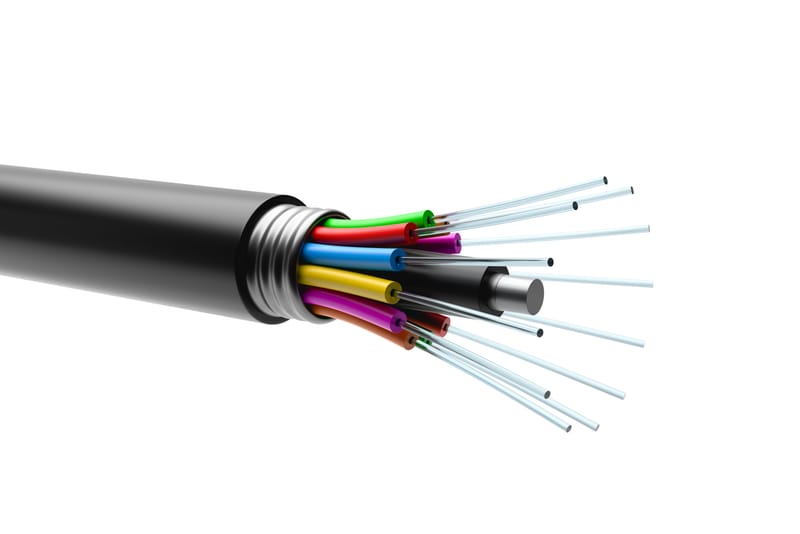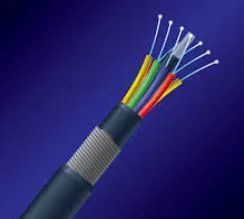FTTx SOLUTIONS DEPLOYMENT

INTRODUCTION TO FIBRE OPTIC IN TELECOMMUNICATION
Owing to the constant demand for more bandwidth and more customers, for gigabits and beyond gigabits transmission of data, fiber optic communication is the ideal choice. This type of communication is used to transmit voice, video, telemetry, and data over long distances which other transmission media find hard to handle.
WHAT IS OPTICAL FIBRE?
We know that optical fiber has revolutionized the communication sector and made efficient data transmission possible. It consumes less power and is non-flammable. Optical fibre is the technology associated with data transmission using light pulses travelling along with a long fibre which is usually made of plastic or glass. Metal wires are preferred for transmission in optical fiber communication as signals travel with less damage. Optical fibers are also unaffected by electromagnetic interference. The fiber optical cable uses the application of total internal reflection of light. The fibers are designed such that they facilitate the propagation of light along with the optical fiber depending on the requirement of power and distance of transmission. Single-mode fiber is used for long-distance transmission, while multimode fiber is used for shorter distances. The outer cladding of these fibers needs better protection than metal wires. Some exceptional characteristic features of this type of transmission that make the ultimate system are its large bandwidth, smaller diameter, lightweight, long-distance signal transmission, low attenuation, transmission security, and so on making this communication a major building block in any telecommunication infrastructure.

What are the different types of fiber optic cables? The optical fiber cable is classified based on three factors
- Refractive Index
- Materials used
- Propagation mode.
The refractive index of OFC is of two types:
- Step Index Fibers: They comprise a core that is enclosed by the cladding with a uniform single refraction index.
- Graded Index Fibers: The refractive index of the optical fiber decreases as the radial distance from the fiber axis increases.
- Based on materials, OFC is of two types:
- Plastic Optical Fibers: The poly(methyl methacrylate) is used as a core material for the transmission of light.
- Glass Fibers: This fiber cable consists of extremely fine glass fibers.
Based on the mode of propagation of light, OFC is divided into:
- Single-Mode Fibres: Used for long-distance transmission of signals.
- Multimode Fibers: Used for short-distance transmission of signals.
FTTx SOLUTIONS DEPLOYMENT AS SERVICE
At X-PLUS TELECOMS & TOWERS, we deliver intra-city and inter-city fiber deployment for telecommunications companies. We provide large-scale end-to-end fiber optic deployment, from excavation, pipeline, and OFC insertion to terminations. Trenching of hard and soft soil, trust boring on duct route, laying of PVC Pipe and duct route, Laying of HDPE duct, connection of duct to manholes, coupling of HDPE duct, backfilling of trenching, site commissioning, cable testing, etc.)
TERRESTRIAL TO FTTH FIBRE OPTIC DEPLOYMENT
At X-PLUS TELECOMS & TOWERS, we also handle TERRESTRIAL to FTTH Fibre Optic Projects. Fibre to the Home (FTTH), or Fibre to the Premises (FTTP), is a broadband internet connection technology that uses optical fiber to deliver high-speed broadband internet directly to individual buildings such as households, apartment complexes, and businesses. We had to handle several of these projects with our partners in several Estates in Lagos Island, Nigeria. It’s the new means of high-speed bandwidth. Although the FTTH network system is not fully being deployed in Chad, reasons we have had to work with our partners over the years to accomplish projects with our technical and human resources. From our gallery, you will see some projects we were involved in Nigeria through our partners.
AERIAL-UNDERGROUND FIBRE OPTIC DEPLOYMENT
At X-PLUS TELECOMS & TOWERS, we also handle AERIAL-UNDERGROUND Fibre Optic Projects. The aerial-underground configuration is mainly implemented when the Telecommunication Fibre Optic is available only on one side of the street while the subscriber to be connected is located on the opposite side and has an available underground infrastructure, extended to the property line. In this particular case, while subscribers located on the side of the overhead line will be connected via an aerial-façade configuration, the optical signal will be routed in an aerial-underground configuration for the rest of FTTH subscribers. Thus, from the telecom pole located near the house to be connected, a cable down-lead will be installed to further route the drop cable into ducts up to the subscriber’s premises.


